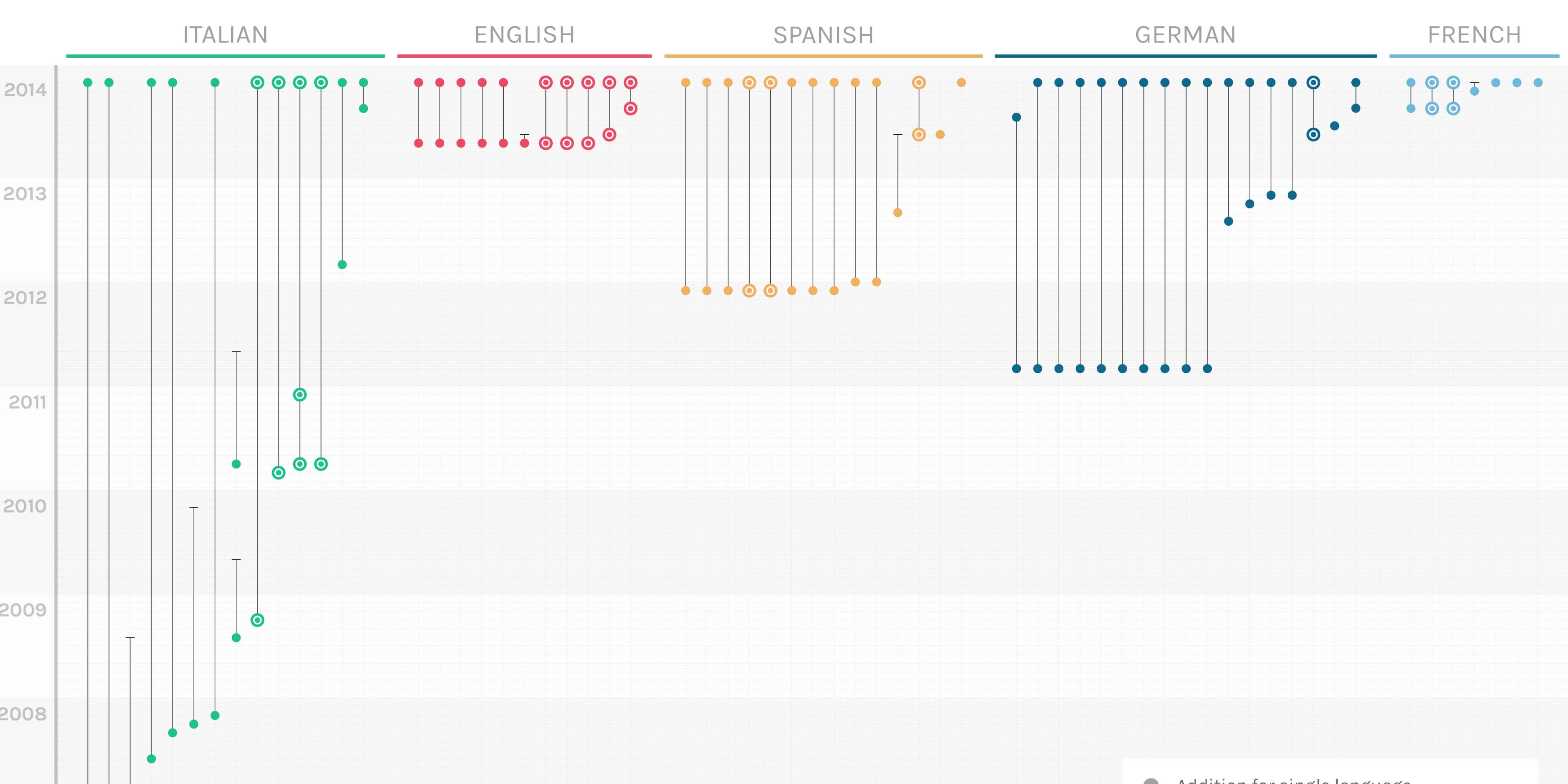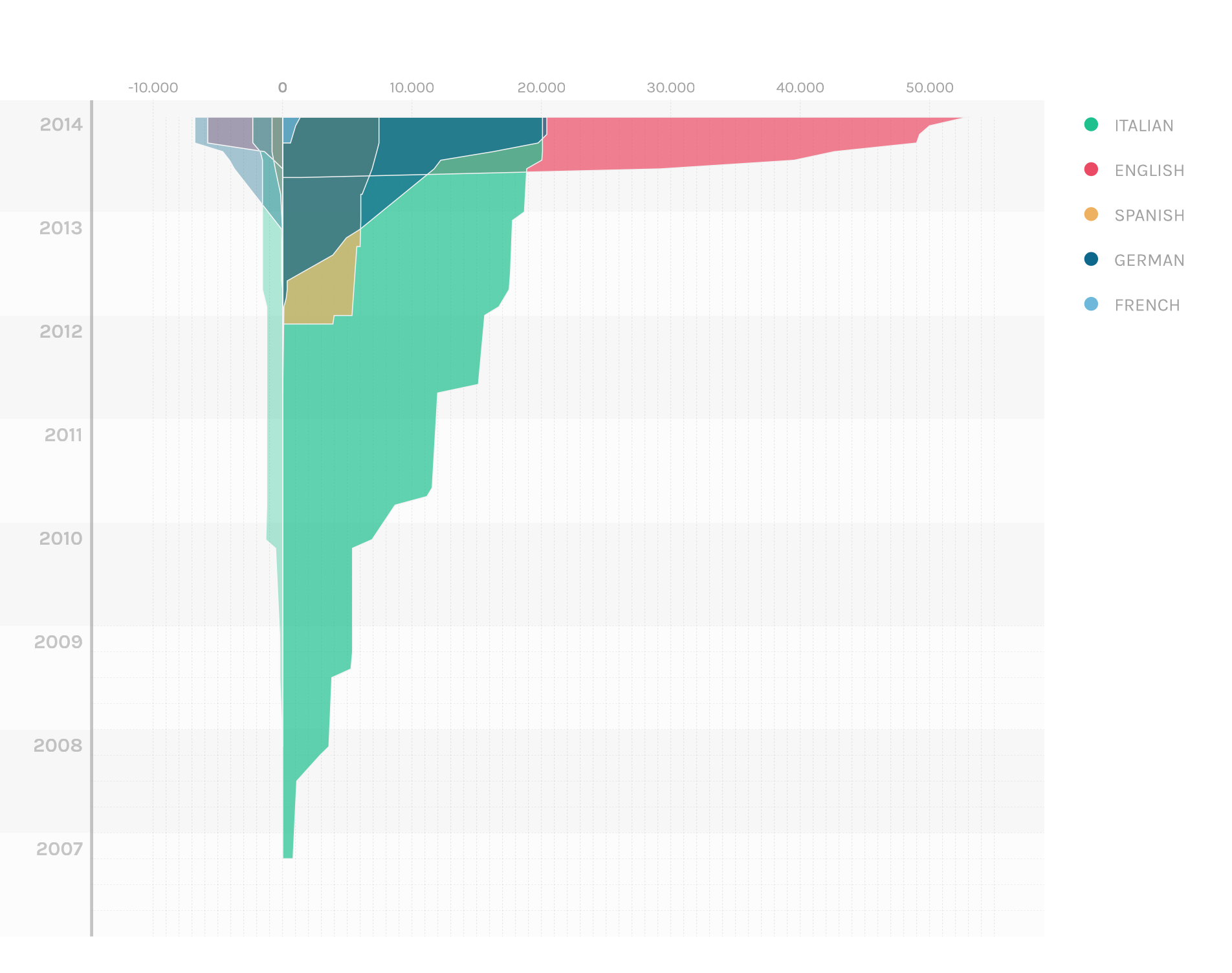Introduction
The second analysis unfolds other aspects related to our Wikipedia environment, indeed it tries to locate our topic, the right to be forgotten, by mapping the Wikipedia pages containing a link to the Right to be forgotten page.
We operated a quantity-quality investigation on these pages, combining the quantity of bytes of each page with the content of the texts. Our aim was to verificate if there were common topics, and which page was the best updated.
This relation becomes very interesting once we added informations about the date and authorship of the link, giving us an overview of the closest topics and how the discussion was carried on before the creation of its own page.








